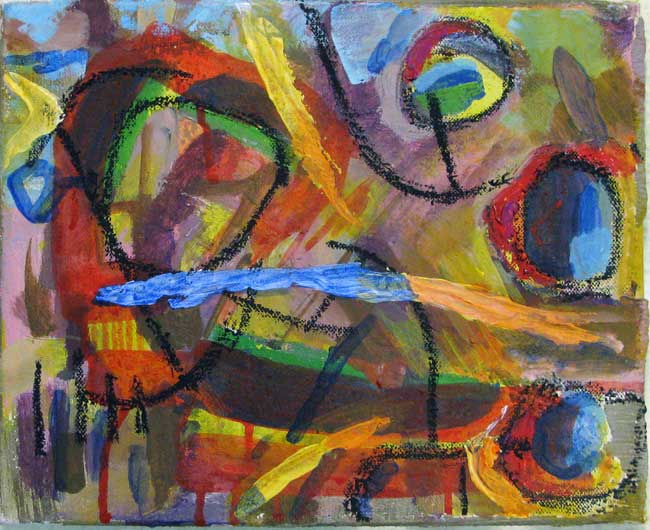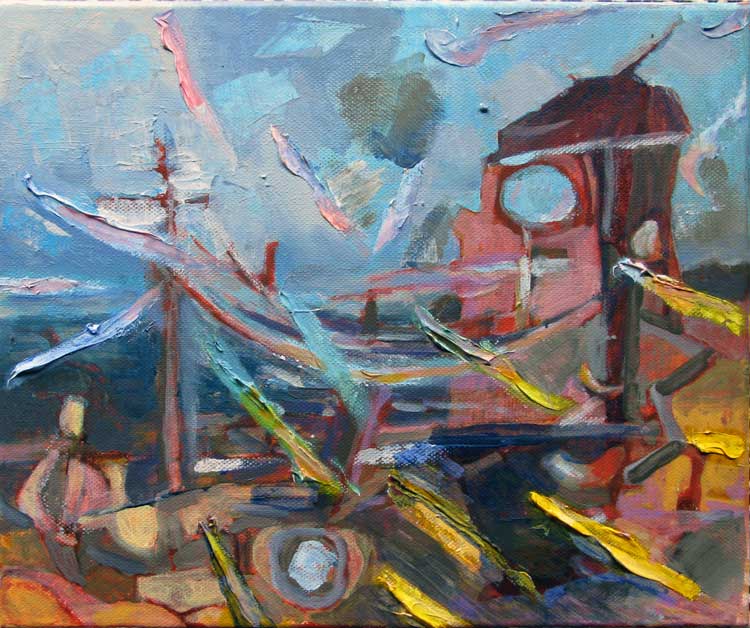The Spirit that accompanies contemporary art does not articulate rich contents that would illuminate the object of art beyond what is already said of contemporary art itself. It praises contemporary art, which is indeed more difficult to apprehend if its depth remains enigmatic even to those who delight in celebrating art rather than artistic ideas. They likely understand the present age as a kind of return to the past and a projection of the future. Yet this is the activity of consciousness when abstraction excludes reality, for consciousness thereby acts subjectively and as pure I. The I possesses certainty of the I, extolling a subjective inclination which, however, expresses not a purifying power but merely the power of the I. Subjective judgment elevates abstract reason, yet it fails to mention the inwardness of subjectivity.
Contemporary art objectifies the idea of the beautiful and the alienation of Spirit—ideals that manifest the movement of Spirit, of which something is spoken here and there. Contemporary art exhibits effects that strive spiritually toward freedom, so as to reveal purifying power. Hence it is necessary to discourse on contemporary art, that the ideal may come alive also in speech. For contemporary art is described only with modest content, which renders it mysterious. It appears as though the abstractions expressing the fragmented world of beautiful art are incapable of manifesting the Spirit that comes into appearance. This testifies to the need to speak of contemporary artworks, so that beauty may be expressed also in language and thus presented with richer content. For the abstract beauty of the ideal, expressed through the artistic idea, dissolves into abstractions; and it is evident that, as idea, it is merely a possibility for the Other—indicating that Spirit has not yet grasped itself in its otherness.

The power of Spirit lies in its ability “to recognize itself in its alienation into feeling and sensuousness,” for the human being contemplates his own inclinations. The true task of art is to present to consciousness the highest interests of Spirit. For “artistic beauty is beauty born and reborn of Spirit.” Truly beautiful is that spirituality which has been represented and which stands as ideal. This ideal ought to express purifying power as represented actuality—namely, free spirituality. For art liberates from the power of sensuousness and is, in its purpose, free. Contemporary art thus invites us into sensuous apprehension, in order that we may experience artistic beauty as the totality of the idea. Said differently, Spirit ought to grasp itself in its alienation, with the aim of grasping itself in the Other.
Contemporary art invites us to behold the represented actual idea that exhales the artistic beautiful. The idea is not yet displayed in its totality, but as that which is becoming—passing into its Other, yet not attaining full other-being. For this there is still time; the fully constituted idea, or its becoming-against-itself, will come to be when its time arrives. For now, artists strive to express free spirituality in its universal moments; what is presented as concrete spirituality is the movement of inwardness striving to express contradiction. This is the expressed purifying power that radiates the beautiful as spiritual ideal: one might say it is represented abstract spirituality. Thus it is unsurprising that the form of sensuousness becomes a kind of affection, for the artistic beautiful “is not the idea as such, but the idea as it has represented itself in actuality.” This is the fitting unity of inwardness, expressed as the eminent power of art.
When we behold a sensuous pictorial image, it is a deceptive presentation of its moments. For this is not yet the complete manifestation of the idea, but the ideal in its universal moments—a transition of inwardness into contradiction, wherein inwardness becomes alive as a world equal to itself. This is aptly recognized as Spirit’s alienation into feeling, which is the unfolding of inwardness into universal moments, for contemporary art labors on behalf of subjective inwardness. Contemporary art will speak of this more precisely when the artwork reflects represented spirituality in the form of the becoming-against-itself of inwardness. For the excellence of contemporary art in its actuality depends on the degree of developed inwardness. In inwardness, idea and form appear to one another as divided inwardness, which has stepped forth against itself as free, concrete spirituality and as represented actuality.
In the foregoing I have attempted to present something of what the artistic idea is in its appearing. It is the beautiful that comes to life in semblance and is destined for feeling, intuition, and imagination. Yet this is not merely a play of abstractions, but independent and free art that sets before us the highest interests of Spirit.









